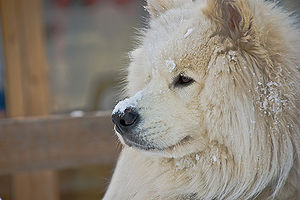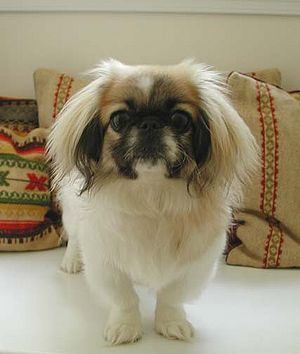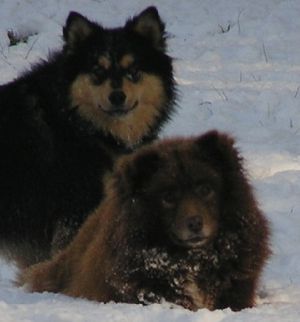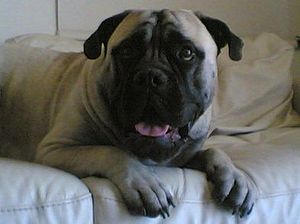 |
| Vital Statistics: |
| Place of Origin: Russia |
| Group: Working |
| Height: males 21-23.5 in., females 19-21 in. |
| Weight: males 50-65 lbs., females 40-55 lbs |
| Life span: 12-16 yrs. |
| Trainability: high |
| Good with children: yes |
| Good with other pets: yes |
The Samoyed dog takes its name from the Samoyedic peoples of Siberia. These nomadic reindeer herders bred the fluffy, white, smiling dogs to help with the herding, to pull sleds when they moved, and to keep their owners warm at night by sleeping on top of them.
Recent DNA analysis of the breed has led to the Samoyed being included amongst the fourteen most ancient dog breeds, along with Siberian Huskies, Alaskan Malamutes, the Chow Chow, and 10 others of a diverse geographic background. The first Samoyed was brought to United States by fur traders in 1906. The Samoyeds have been bred and trained for at least 3,000 years. Like the former two other dog breeds, the Samoyed also has a wolf-like appearance, and has also sometimes crossbred to wolves to produce a wolf-dog hybrid.
A Spitz-like breed, this dog is named after the Samoyed tribesmen of Siberia. These nomadic reindeer herders bred the fluffy, white, smiling dogs to help with the herding and guarding of the reindeer, to pull sleds when they moved, and to keep their owners warm at night by sleeping on top of them. The beauty of this dog encouraged fur traders to bring them to Europe and America. The Samoyed was brought to England by the explorer Robert Scott in 1889. There the breed was developed and spread around the world. The Samoyed is also known as the Bjelkier.
What does the Samoyed look like?
The Samoyed is a strong dog with a wedge-shaped head and strong jaws. Height is 19-24 inches tall and weight is about 40-70 lbs. The nose is black or brown. Eyes are almond-shaped and set wide apart. Eye color is medium to dark brown. Ears are wide-set and erect and are well covered with hair inside and out. The long tail is bushy and carried over the back in Spitz style. The outer coat is thick, coarse and longish while the undercoat is soft and lying close to the body offering protection against the Arctic cold. Frequent brushing is necessary especially in summer. Coat colors are white, off-white, cream or yellow.
What is the Samoyed’s temperament?
The Samoyed is a very friendly dog. It is not at all aggressive but does bark a lot. It’s very playful and is great fun for children. Because they are a working breed, the Samoyed needs sufficient exercise to avoid behavior problems. It is a calm, gentle, obedient and loyal dog. It sometimes attaches itself to one person but is affectionate with everyone. This breed, having come from Siberia as a working dog, must have daily exercise and loves to play in the snow.
What are the Samoyed’s uses?
At one time it was used to herd reindeer. It is a sled dog and is able to pull heavy loads over long distances. The Samoyed’s frequent barking makes it a good watchdog. It can live in apartments as long as it gets enough exercise. The good-natured Samoyed is a great companion dog.
Possible Health Issues
Hip dysplasia, progressive retinal atrophy, diabetes, heart problems such as aortic and pulmonic stenosis, hypothyroidism
- Australian Cattle Dog
- Australian Kelpie
- Australian Shepherd
- Bearded Collie
- Beauceron
- Belgian Sheepdog – Groenendael
- Belgian Tervuren
- Bergamasco
- Berger Picard
- Blue Lacy
- Border Collie
- Bouvier des Flandres
- Briard
- Cardigan Welsh Corgi
- Catahoula Leopard Dog
- Collie
- English Shepherd
- Entlebucher
- Finnish Lapphund
- German Shepherd
- Hovawart
- Icelandic Sheepdog
- Laika
- Lancashire Heeler
- Miniature American Shepherd
- Mudi
- Old English Sheepdog
- Pembroke Welsh Corgi
- Polish Lowland Sheepdog
- Puli
- Pumi
- Pyrenean Shepherd
- Shetland Sheepdog
- Standard Schnauzer
- Swedish Vallhund



